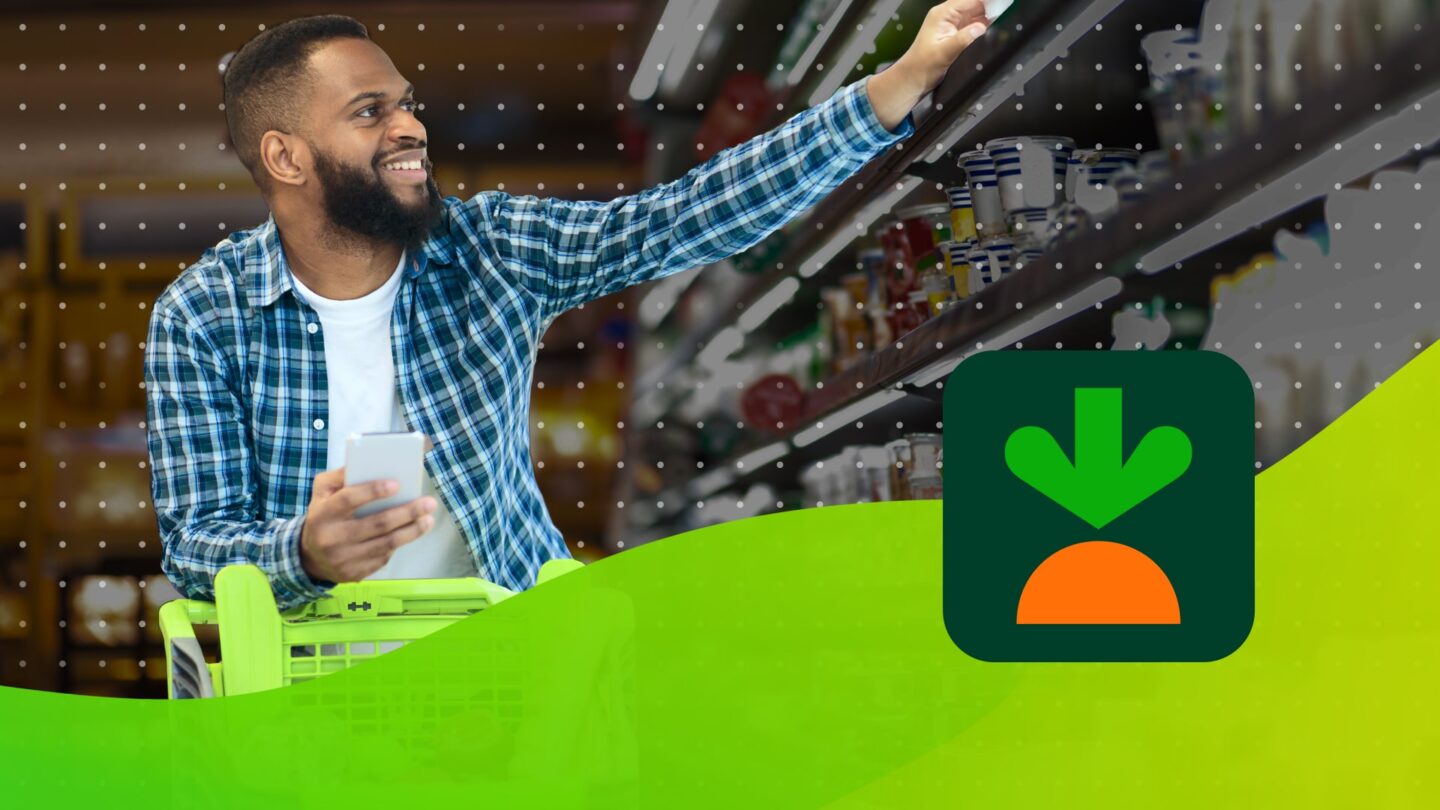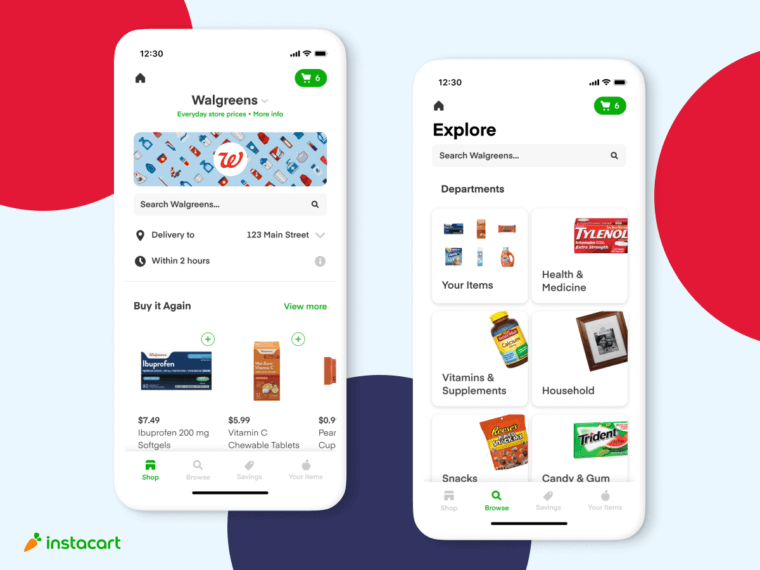What is Instacart? How it Works for Shoppers & Stores

“How does Instacart work?” It’s a simple enough question on the surface. And the answer can be fairly simple as well, depending on what exactly someone is really asking. Many people asking that question are actually wondering what exactly Instacart is, and/or how they can go about placing an order. So let’s start there.
Instacart is the leading grocery delivery platform in the US, and leading grocery technology company in North America, offering same-day delivery and pick-up from an expansive array of stores in the grocery space and beyond. Instacart itself does not hold the inventory from the stores available to shop from on the platform, nor is there any implied relationship between the 1400+ different retailers and grocers (80,000+ stores) customers can shop with through Instacart. Instacart users can conveniently shop from more than one store at a time on Instacart, but each store will have its own separate cart, delivery fees, Instacart shopper, and minimum order value.
While customers think of Instacart as a service that benefits—and is designed for—them, it is simultaneously a service for brands and stores themselves.
Current offerings on the Instacart Platform include:
Instacart’s well-established platform not only helps retailers ‘bring their business online’ and/or expand their reach, but also handles the human labor element: facilitating the physical shopping for, and/or delivery of, those purchases through their network of Instacart Shoppers.
There is also an affluence benefit, as noted by NielsenIQ:
“Even retailers that have invested in their own e-commerce platforms use Instacart to reach a wider shopper base. Instacart’s shoppers are more affluent and spend more online than buyers from any other e-commerce retailer, according to NielsenIQ’s e-commerce data. With its growing cross-channel shopper base, Instacart provides retailers an expanded audience of shoppers who would otherwise not purchase from their retailer-branded sites.”
Customers can place an order through Instacart using their smartphone or computer. Once an Instacart Shopper accepts the order, they will then shop for and deliver the customer’s items to their home, or prepare them for pickup at the store, often within a few hours or less.
As for what that process looks like for the customer from start to finish:
By design, apps like Instacart present an incredible opportunity for advertisers to reach (often literally) hungry customers in the consideration stage.
“They had to go to Instacart.com—very consciously, or open the app—the geography had to be selected, a store had to be selected, and then the user begins their journey. They’re not just browsing at this point; some decisions have been made, some plans are happening. We’re either out of ice and beer, or we need the groceries for next week, or we can’t get to Costco. What we have to do for the future is take a look at those connections, and understand how we’re going to account for them, because those are very valuable partners.”

— Elizabeth Marsten, VP, Commerce Strategic Services at Tinuiti
As with many delivery services, there is no set price for using Instacart on the whole, but some cost considerations to keep in mind include…
Fees: Common fees you might see listed on your Instacart order include delivery fees, service fees, long distance fees, heavy order fees, priority fees, pickup fees, and/or miscellaneous fees applicable to specific states and localities, including bottle and bag fees.
Potentially higher prices: The retailer sets the price for their goods on Instacart, with many setting the price 10-20% higher than the in-store price.
Shopper tip: While not required, Instacart suggests that customers leave at least 5% of their total order cost as a tip for their shopper by default. Instacart shoppers can see the offered tip before accepting an order, so a more generous tip may help you secure more speedy service. Consider your personal tipping habits when evaluating how much Instacart will cost for you.
Instacart+ membership: There is no membership required to shop on Instacart, though the optional membership program can quickly pay for itself for frequent Instacart users. Instacart+ currently costs $99 annually or $9.99 monthly, offering members lower service fees, free delivery on orders above $35, a Peacock subscription and more.
While these Instacart costs can quickly add up, the convenience factor makes it worth it for a growing number of users. As of 2022, Instacart has 10 million monthly active users.
Is Instacart worth it? That depends! While many Instacart devotees can’t imagine going back to a life before personal shoppers, others treat it as an occasional indulgence or emergency back-up plan. Wherever you fall on the Instacart spectrum, some key advantages and disadvantages to consider include…
Key Benefits
Key Considerations

Image Source: Instacart.com
The local retailers that you can order from through Instacart lean heavily toward grocery stores, but include many popular stores offering a variety of non-grocery items, as well.
Instacart continues to announce many newsworthy partnerships, handling same-day and scheduled deliveries for a growing number of household-name retailers.
More than “1,400 retail banners trust Instacart to help grow their business across 80,000+ retail locations,” with a few of those stores including:
While we anticipate that Instacart’s ‘bread and butter’ (pun intended) will continue to be grocery store orders and deliveries for the foreseeable future, we also expect that the number of partnering stores outside the grocery space will consistently grow over time as evidenced by their variety of platform partners, plans for global expansion, and recent IPO.
“In a year of monumental online sales, few impacted the consumer packaged goods (CPG) industry’s growth more than Instacart. A third-party grocery delivery and pick-up service provider, Instacart grew by over $15 billion in 2020, second only to Amazon in CPG sales growth.”
— Natalie Williams, VP of Product Leadership, NielsenIQ
The fact that Instacart’s user base more than doubled in size between 2019 and 2022 is no mystery, mistake, or surprise; the time was right, and they were ready for it. The timing being right was two-fold, and inextricably interwoven with the modern tech capabilities that make Instacart…well…work.
First, the timing was right because the full suite of technological advances needed for grocery delivery to be a viable, successful option was finally in place. As noted by IEEE Spectrum in their comprehensive The Algorithms that Make Instacart Roll:
“Cloud computing and inexpensive smartphones emerged in the decade after the launch of the first-generation online grocery companies. By 2012, when Instacart began, these technologies had created an environment in which online grocery ordering could finally come into its own.”
Second, COVID-19 reordered the primary benefits/reasons for using Instacart; this shift in the why of grocery delivery brought a wide range of new shoppers who might not have otherwise ever created an account.
Whereas personal safety might not have even made the Top 10 list of reasons to use Instacart before the pandemic, suddenly, this service that was previously embraced primarily for its convenience and time saving benefits was now being used to minimize the risk of contracting COVID-19 in crowded public environments.
Apoorva Mehta, Founder, Chairman, and former CEO at Instacart, shared with Forbes:
“We saw five years of growth in a matter of five weeks. And the growth has continued. We grew over 300% year-on-year.”
Historically, supplying product content to Instacart was largely the responsibility of retailers themselves; this content, which was originally received from the brands, includes item images, titles, relevant keywords, and product descriptions. Brands did have the ability to modify this product information via a 3P CSP (third-party content service provider), but given the associated cost of a CSP, not all brands have one.
In May 2021, Instacart announced a “Product Library” feature that put more control in the hands of brands of all sizes—no CSP required. Forbes notes the change is “a rare win-win-win-win for all stakeholders involved”—brands/advertisers, retailers, in-store Instacart Shoppers, and the end customer. Instacart’s self-service Library Manager tool “gives brands direct control of their product content quality and accuracy on the Instacart marketplace.”
Instacart has paved the way for a momentous 2024, and we’re excited to see how recent advances help shape the future of the company, including:
So… What is Instacart?
As we’ve explored, the answer to that seemingly simple question can take a few different routes, including:
Instacart is the connector. Instacart can be thought of as a double-pathed bridge; on the customer side, it bridges the customer with the Instacart Shopper. On the business-side, it bridges the store with the Instacart Shopper. Instacart is the intersection between the 4 main players: customer, brand, retailer, and shopper / delivery person.
And…How does it work?
The relationship between people and technology makes it work. And neither can do it without the other.
“At Instacart, we know technology will play a crucial part in transforming the largest retail category in the world. We also know that the future of grocery should belong to the people who make it special today — and we can help them continue to innovate. We hope you’ll join our table.”
— Fidji Simo, CEO, Instacart (source)
Want to learn more about selling and advertising on Instacart? Visit our Instacart services page or contact us today to chat with an expert!
Editor’s Note: This post was originally published by Shannon Mullery in November 2021 and has been updated for freshness, accuracy, and comprehensiveness.
